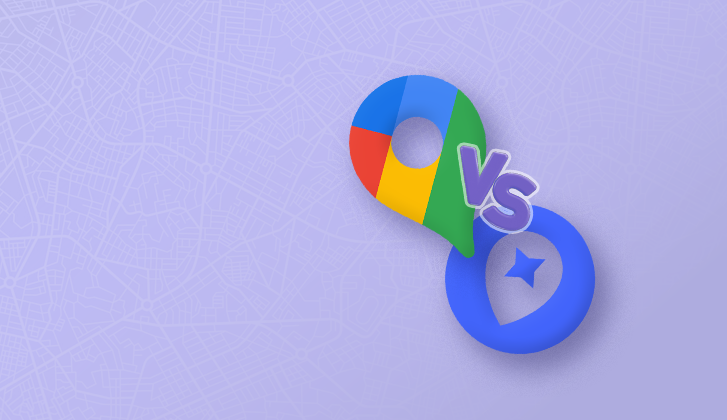A Step-By-Step Guide to SaaS App Development
Take your business to the cloud!
The SaaS industry is growing rapidly, revolutionising the way companies operate and attracting significant investment. With a significant edge over traditional software, SaaS development has become a focal point for entrepreneurs and organisations alike.
As businesses increasingly rely on SaaS solutions for their everyday operations, the industry’s growth potential continues to soar. So if you’re intrigued by the SaaS phenomenon and eager to tap into the potential of the SaaS market, you’ve come to the right place.
In this article, we delve into the world of SaaS development to explore its main principles, benefits and challenges, and show you how to build your own SaaS application in 7 actionable steps.
Let’s dig right in!
Table of Contents
- What is a SaaS Application?
- Types of SaaS Applications
- Benefits of the SaaS Model
- Considerations and Challenges
- SaaS Application Development Process
- Final Overview
What is a SaaS Application?
SaaS is short for software-as-a-service and it refers to software that is hosted in the cloud.
Compared to traditional software that you have to download and install on your computer, you access SaaS apps through the web. They’re typically licensed on a subscription basis.
You’re probably already using several SaaS apps every day. Both in your personal and professional life - from Google Drive, Zoom, Slack to Netflix and Spotify.
Entrepreneurs strive to build a SaaS for a simple reason - if you have a popular SaaS you are in a position to steadily build a passive income through monthly recurring revenue. You can scale relatively quickly if you have the right architecture.
Types of SaaS Applications
B2B vs B2C
SaaS products catering to the B2B market are developed with business needs in mind and typically offer advanced features, customisation options, and integration capabilities to meet the complex requirements of businesses across different industries.
In contrast, B2C SaaS apps target individual consumers or end-users directly. Examples include streaming platforms (e.g. Netflix), fitness apps, personal finance tools, and language learning apps (e.g. Duolingo).
Horizontal vs Vertical
Horizontal SaaS applications provide broad functionality that caters to a wide range of verticals and businesses with common needs and requirements.
Examples of horizontal SaaS applications include project management tools (e.g. Asana, Trello), customer relationship management (CRM) platforms (e.g. Hubspot, Salesforce), collaboration & communication platforms (Slack), and accounting software.
On the other hand, vertical SaaS apps are specifically designed to meet the unique needs of a particular industry or niche market. For example, healthcare management platforms serve the healthcare industry and its needs, such as patient record management, appointment scheduling, medical billing, etc.
It’s important to understand what kind of SaaS apps are out there so you can identify a problem that you’re going to solve with your product.
Benefits of the SaaS Model
As we already mentioned, SaaS is software hosted in the cloud. Nowadays, cloud computing and modern tooling have made it much easier to build SaaS applications.
Let’s have a quick look at what’s possible today:
- Quick setup: The cloud offers an environment to swiftly host and install the service. This means that the time required to deploy your SaaS app is greatly reduced compared to traditional software.
- Cost-effective: The economy of scale allows you to pay for tools your service uses, and only when you need them, which is much cheaper than hosting everything on your own. In some cases, you can even initially host your SaaS for free.
- Ability to scale: Since your service is software hosted online, it is relatively easy to upgrade as you subsequently scale.
- Flexibility and reliability: You can always find a web hosting provider that meets the unique needs of your SaaS application. Servers can be distributed across the world which means it will take more than a fire accident in a location to crash your software. In addition, the servers can be closer in proximity to your users, which offers a faster service (due to lower latency).
- Easy updates: Customers would usually have the latest version of your software each time they open up their browser.
- Security and safety: Encryption and security highlight the premium placed on data provided by customers. These ensure the data is stored in a safe place.
Considerations and Challenges
Reliability
SaaS products are expected to be highly available and reliable, especially considering how many use them in their day-to-day. Downtime can severely impact user satisfaction and business reputation.
Building a fault-proof platform, implementing backup and disaster recovery strategies, and monitoring app performance are all key factors to consider to maintain high uptime and deliver a great experience.
Integration & Compatibility
SaaS apps often need to integrate with other systems and platforms, such as CRM software, payment gateways, or third-party APIs. Ensuring compatibility, seamless data exchange, and robust integration capabilities is essential for providing a comprehensive solution to your users.
Security
SaaS security is becoming an increasingly important topic as organisations continue to add to their ever-growing SaaS stack.
Security measures must be implemented to protect against data breaches, unauthorized access, and other threats. This includes encryption, user authentication, secure data storage, and regular security audits.
SaaS Application Development Process

Photo by Jukan Tateisi on Unsplash
Now that you have a better understanding of what SaaS is, let's delve into the SaaS development process and what it takes to build a market-competitive cloud service:
1. Research and study the market
The SaaS market is growing significantly. More and more users are willing to pay a subscription fee when the service brings them value. Your first job is to determine the service you want to offer and evaluate the need for it. This involves:
- Assessing the interests of your potential customer base
- Evaluating their main pain points
- Assessing your competitors
- Determining your unique selling point
The SaaS model works best when your software’s use case is clearly defined and recurring, can be monetarily rewarding for your users, and appeals to a larger customer base.
2. Evaluate the key requirements for your SaaS product
It is important to clearly define and write out the business requirements for your SaaS app. While it’s easy to be enthusiastic about your future product, you may inadvertently come up with a lot of ideas that users would not be willing to pay for.
That is why, once you have clearly outlined requirements, you should sort them out by which features are the most important for your users. The Agile methodology provides a structured way to do this.
You can create a list of user stories as per Atlassian’s guide, then sort them by how important they are to your users. This preparation will also give you much better results and more accurate quotes when approaching a software development partner to build your product.
You should also think about how important branding, interface, and experience will be to your brand. In certain areas, this may be more important than others (for example, if you’re building a SaaS that provides CCTV monitoring for yachts, UX, UI, and branding will be much more important than in a corporate accounting SaaS).
You should also consider how quickly you would need to scale, what third-party APIs you may need, and possible integrations.
3. Choose a pricing model
This aspect of your SaaS must be carefully created to maximise profit from your service. It largely depends on the needs of your users which you found out during the first two steps.
There are a couple of different pricing strategies you can adopt. You can make subscriptions periodic, one-off, or on a usage basis. A great idea would be to give your customers a free trial to evaluate your service before subscribing.
You should also consider combining this with marketing campaigns using promotions and encouraging referrals within your platform to kick off the initial user base.
4. Choose the technical stack
This refers to the programming languages, frameworks, and software you will use to implement the outlined requirements in the previous steps.
The technology is just a means to an end — we’ve seen startups that have the best, most scalable, solid infrastructure still fail because it was “too perfect”. You should launch fast, test, and improve, and this will also impact your choice of technology.
In addition, you should also consider the Law of Instrument, when seeking out advice on tech stack, you will almost always get a biased answer towards the preferred tools.
That said, choosing the best tech stack depends on the problem you are tackling, budget, speed and timeline constraints, and other factors.
A typical tech stack will include the following components:
- Front-end development focuses on the user-facing parts of the application — everything a user sees and interacts with. It relies on programming languages like HTML, CSS, and JavaScript frameworks like React and Vue.
- Back-end development is responsible for the server side of the application. The parts that are hidden from the user, but essential for implementing the core functionalities. It requires fast and efficient tools like Ruby on Rails or Node.js.
- You also need to consider the database which you will use to store all back-end data. Some popular options include MySQL, NoSQL, and PostgreSQL.
- Finally, you need to select a hosting provider for your SaaS. Popular cloud servers include Amazon Web Services (AWS), Microsoft Azure, and Google Cloud.
Here at All Front, we like to provide the following options:
- Angular or React, with a Firebase Backend for MVP
Selecting the right combination of technologies is vital to ensure your SaaS application runs smoothly under different scenarios. You have to make the choice taking into consideration several factors like project size, scalability, reliability, security, team expertise, time to market, and development costs.
5. Assemble the best team
Now that you have a plan, you need a team to execute it. An experienced team with the right skills.
First, you need UX & UI designers to make sure your app design is user-friendly and intuitive through research, wireframes, and mockups.
Next, you need software developers to help you translate the vision into code. Either front-end and back-end or full-stack developers who have expertise in the technologies you decide to go with for your project. Ideally, you can also ask the developers to help you with choosing the right tech stack.
Your team also needs a Quality Assurance (QA) expert to reduce bugs during the implementation of your SaaS as well as make sure the final product meets all requirements.
You have a few options when assembling your team. You can either do this in-house, through freelancers or by outsourcing to a SaaS development company:
- In-house: While this may seem like the best option in the long term, for an early-stage startup it’s not the most viable one. In-house teams are flexible and engaged, however, hiring and training employees is a long process that can be costly.
- Freelancing: This might be the cheapest option and you can select freelancers with experience in specific fields and technologies based on your needs. Keep in mind that freelancers won’t be as dedicated to your product and company goals as in-house employees. You need to have a solid strategy and plan so you can provide freelancers with well-thought-out requirements. Otherwise, it won’t work well.
- Outsourcing: Hiring a custom software development company combines the best of both worlds. You get an experienced remote team that’s committed to providing quality at a cost-effective price point.
6. Create an MVP first
Creating a Minimum Viable Product (MVP) for your SaaS application is a crucial step. Launching an MVP first will help validate your idea and test product-market fit. Once you see how people respond to the service and gather feedback, you can continue improving the offering. While the MVP is not the finished product, make sure that you prioritize the core features that bring your users the most value.
7. Measure the right metrics
A crucial step that most founders may overlook is measuring the right metrics at the right time.
When you are at the very early stage of building your SaaS app, the nature of your metrics should be qualitative. At this stage, it’s important to validate your hypothesis, gather critical user feedback, and gain an understanding of customer sentiment and engagement. You can do this by talking with prospects during feedback calls and on social media.
Once you have some paying customers, you can start thinking about quantitative metrics to help you understand important business characteristics.
Let’s go through a list of some of the most critical metrics for a SaaS business:
- Annual Recurring Revenue (ARR): ARR measures the money generated by subscribers that comes in every year. It’s useful for measuring the long-term progress of your SaaS, predicting future growth, and attracting investors.
- Monthly Recurring Revenue (MRR): MRR is the predictable revenue that your business generates in a single month. The difference between ARR and MRR is that with MRR you can easily measure different subscription types. MRR is also useful in measuring the immediate effects of any changes to your offering.
- Churn Rates: There are usually two types of churn metrics that SaaS companies track — customer and revenue churn. The former relates to the number of customers that cancel or don’t renew their subscription in a given period. The latter measures the lost MRR from cancelled customers. Both of these metrics provide insights into the health of your SaaS business.
- Customer Lifetime Value (CLV): CLV measures the total revenue generated by a customer throughout the relationship. It is usually measured together with Customer Acquisition Cost (CAC). To be sustainable, the cost of acquiring customers should be less than their lifetime value.
While we tried to summarise some of the most popular SaaS metrics, keep in mind that this is a non-exhaustive list. While there are countless different metrics, it’s important to track the ones that make sense for your product and your goals.
Also, remember that as you scale your goals will probably change so the metrics that you choose should reflect that.
Final Overview
The SaaS model holds great potential for businesses and entrepreneurs looking to capitalise on the growing demand for cloud services. To be successful in the space, you need to build a product that is unique and provides value to your target market.
We hope our step-by-step guide to SaaS application development has inspired you to take the leap and start building a unique market-competitive online service.
Here at All Front, we have experience delivering digital products across a large number of verticals including SaaS development. Wherever you are on your journey, we’d be happy to lend you a hand or two!




